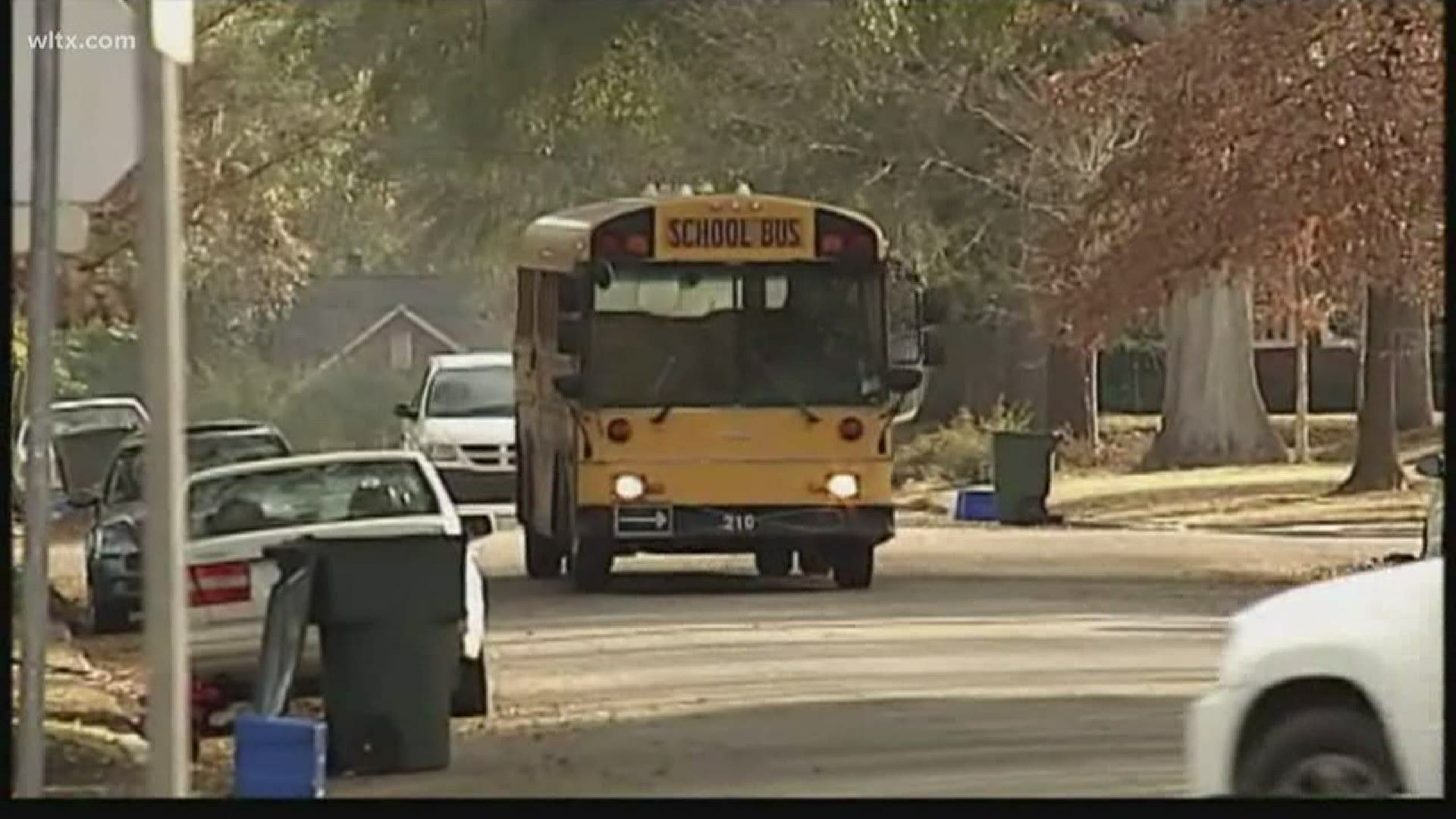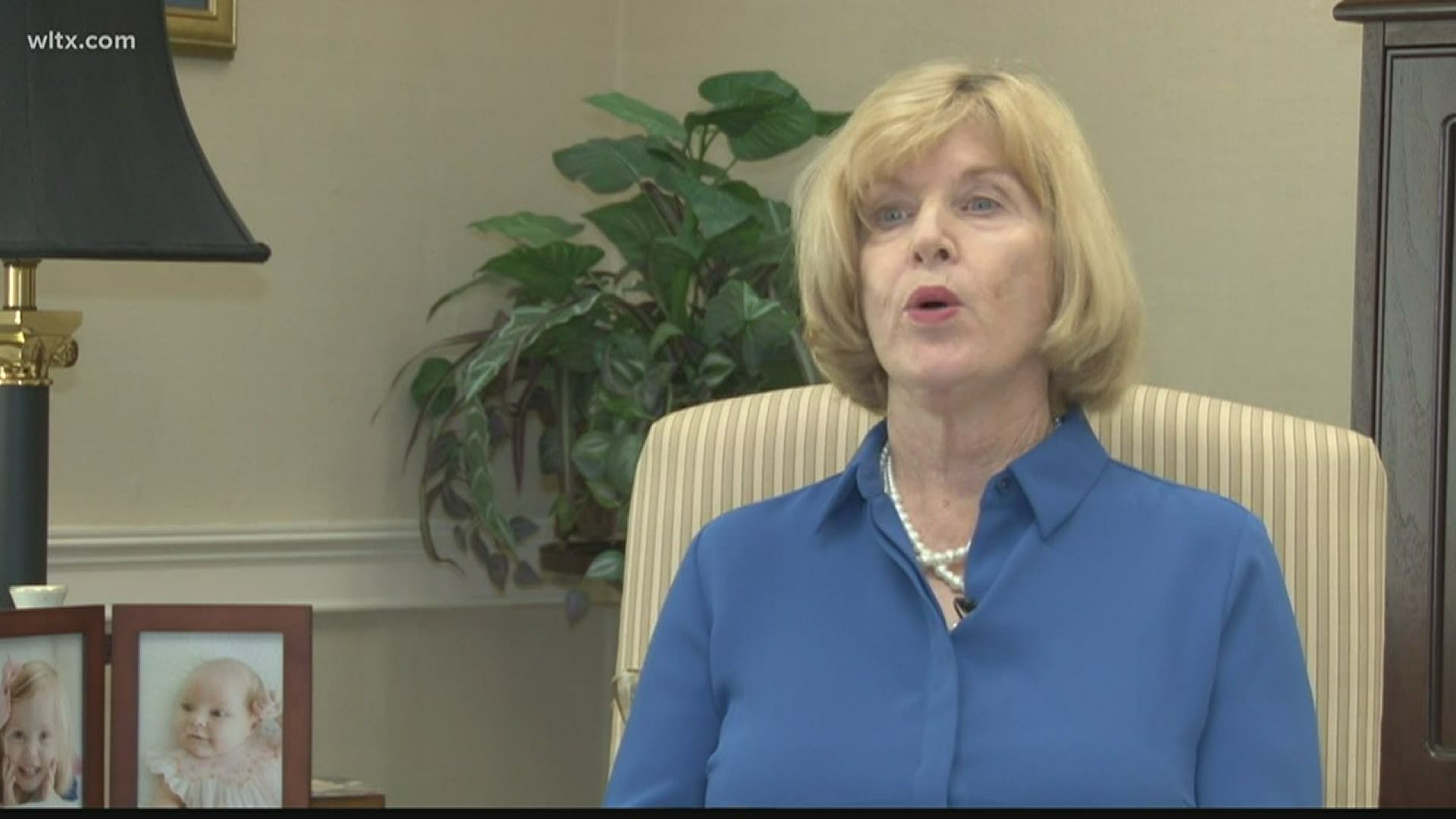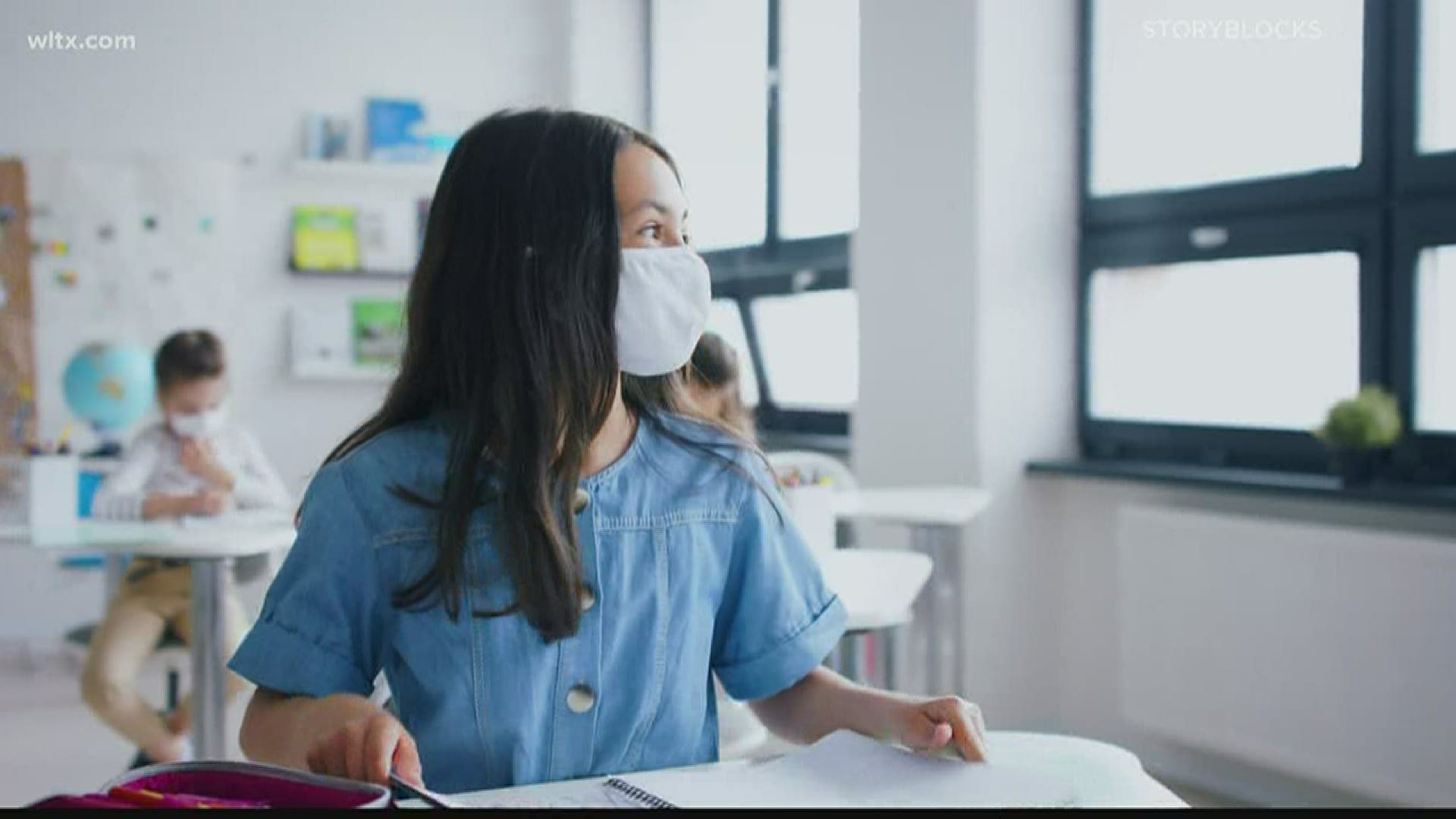COLUMBIA, S.C. — South Carolina Education Superintendent Molly Spearman said schools should reopen but that should happen in a safe way and parents should have options to go virtual.
Spearman addressed multiple topics related to school reopening during the pandemic, including what would happen if teachers get sick and how buses will be handled, in an interview with News19's Darci Strickland.
Strickland collected questions from viewers and posed them to Spearman. Here's some of those responses.
Overall goals:
"It's supposed to be a very happy, exciting time with school staring back and school beginning and I want that to be how it is for all of our families in South Carolina," she said.
"We will have school open. It will be high quality. And I do want all parents in South Carolina to have an option to attend school in a way that best suits their family's needs, whether that's virtually, or face to face. So I hope it can still be an exciting time for all of us but it's got to be safe."
About the pressure to reopen and virtual options:
"These decisions certainly should not be made in Washington DC and even in Columbia it's best for these decisions to be made locally. I think you have to understand though that folks are divided on this issue, and we have to offer a safe environment for students to learn. Obviously virtually is a safe environment so I want all parents in South Carolina to have that option.
"They can, right now through our three South Carolina charter virtual schools. Most districts are going to be offering their own virtual program for K through 12 and then we have a numerous array of courses through our virtual SC here at the Department of Education that are also free for homeschool, private school, and public school parents. So everybody has an option.
But I think we have to understand that there are some children who need to be face to face and we do need to have that option available for them in a safe way.
So I'm leaving that up to the districts as to how they might do that. It might be through some alternative schedule but that there's some way that we lay eyes on students and see how they're doing not just through their content but socially and emotionally. Though there really is a need for us to have that face to face contact and I'm reviewing plans now and it looks like most districts are going to have at least those two options available."
Reaching the students 'lost' during the pandemic:
"Certainly the digital divide [a lack of internet access] made it more difficult. If everybody had access to the internet and teachers could connect with students every day it was much easier to stay in touch with them. We are working on those numbers they are coming down daily. Students are being located and I think districts are understanding the question because the question really is now 'who have you had no contact with. So there have been meals served and telephone calls.Districts are adjusting their numbers as students are located and those numbers are coming down. If they don't get to the point where they can locate a child they are to turn those names and contact information over to the Department of Social Services.'
On the digital divide and virtual learning:
"As far as the digital divide we are working every day with our telephone providers, with our Verizon, AT&T as we purchase hotspots, my-fis, to be ready for the new virtual. The virtual that we will be delivering in August or September is going to be very different than that emergency virtual that you saw in March. Higher expectations, better attendance records, a requirement for students to be online and turning in work. So districts will be much better prepared and it will be of a very high quality. Some of that was offered, but not all. We did the best we could. All will be better in the fall.
"The governor CARES Act fund allows $20 million to purchase mi-fis. And we are working not only to purchase Mi-fis but we found in Horry County for instance, within one week working with the telephone company they brought over 600 families online in a week just by knowing who they were, who needed it. That communication is going on all across the state down in Colleton County we're working with the Palmetto Telephone company there they're getting out into those rural areas. So the accessibility is an issue but affordability is also an issue and with that $20 million we are improving that statue. So I think you're going to see a much higher quality of service given now."
What about teachers getting sick?
"Well there's been federal legislation passed, the Families First Coronavirus Relief, and that gives specific information about how teachers will be covered with additional sick leave to two weeks additional leave across the board as they go through the next school year. So absolutely a teacher would be paid and would be covered with their leave.
"There are exact protocols if a teacher gets sick, what happens if a student in class does, what happens if a student on a bus does. It's not that the whole school has to shut down. It's more finite and that's why it's so important to keep students in a smaller group, eating together, the teacher comes to them rather than students up and moving so the protocols I think will help us and yes there are exact protocols that districts should follow should someone become sick.
On teachers being asked to put lives on the line:
"I hope--trust--that every district is working on a one-to-one basis with their teachers to make sure that their desire is being covered. Obviously there are a lot of teachers who are in an age bracket that might cause them to be more vulnerable. And there are many teachers who have disabilities. They are covered by federal legislation to give them extended leave time and on a case by case basis those teachers need to be working with their own district office."
"I don't want anyone's life to be put on the line. We want everybody to be safe. At the same time, there are teachers who are saying I want to go back. If I could go back I'd go back today. So there are plenty of teachers who are willing to go back and be in the classroom and feel strong and feel like they can teach in safe environment. That's the responsibility of that school district to make sure we can make things as safe as possible. Can we give 100 percent guarantee that no one's going to become infected? No. But we should be able to guarantee that we're doing everything possible to make it as safe as possible."
Special needs students:
"Students with special needs are at the top of our priority because so many of them needed services that had to be one-on-one or in a small group. So back in May we told our schools at that point if the teacher agreed and the family agrees they could start one-on-one instruction and working with students with special services. So some of that has already been going on. And certainly that is something we need to be sure.
This is a group that needs to get in face to face in an environment that's very carefully protected so you'll see most school districts have special program that's at the top of their list to get that going."
How will they handle school buses?:
"We've worked with DHEC; in fact, some of the epidemiologists actually came out and rode the bus with us, with our engineers to figure out how best to have the air circulating, the air conditioner will be on with a few windows down. There's some vents that we could open. "
"The bus driver will have on a mask and our expectation is that the child will get on the bus with the mask on. We will seat from the back. A family may sit together, but otherwise it will be one child per seat."
"They will move up. Nobody sits right behind the bus driver to give them extra protection. So it's about half capacity. Those large buses hold about 78 students so it will be about 46 to 50 students on a bus. "
Spearman said that could lead to a later start time for school or shorten the school day, but she said making sure the school day is quality will be the priority.



